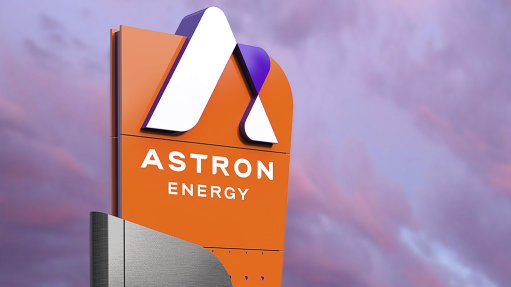Optimising infrastructure project development – how construction software reduces costs and increases ROI
This article has been supplied and will be available for a limited time only on this website.
By: Peter Damhuis - Vice President of RIB Software
The formula for successful infrastructure development has always been thorough planning and efficient execution. However, for too long, the construction industry has struggled with delays, cost overruns, and rework. Traditionally, this planning was labour-intensive and paper-based. Today, there is advanced construction software. “This major shift is redefining how we approach everything from initial design to long-term management, which ultimately enhances return on investment across the board,” writes Peter Damhuis, Vice President of RIB Software.
Since effective planning is paramount, modern construction software provides a sophisticated suite of tools that go far beyond simple Gantt charts. Data-driven insights and predictive analytics can now empower project managers with real-time progress-tracking and the ability to resource-load these programs, thereby ensuring timely project delivery and quality resources on demand.
One of the most impactful advancements is 3D modelling, especially Building Information Modelling (BIM). BIM allows for the seamless integration of architectural, engineering and services designs into a single model. This enables teams to identify and resolve problems and design inconsistencies at the design stage – long before they become costly problems on the construction site. Imagine detecting a conflict between a ventilation duct and a structural beam virtually, rather than discovering it during installation – the savings in time, materials and labour would be immense.
Furthermore, 3D models bring designs to life through visualisations and virtual reality walkthroughs, which ensure that the client's vision is accurately captured and the risk of expensive rework due to misinterpretations of the brief is reduced. Beyond aesthetics, these models contain a wealth of detailed specifications, procurement and even maintenance information, and as such, serve the project throughout its lifecycle.
Reducing costs and avoiding rework
Construction is a fiercely competitive industry in which accurate, competitive pricing is vital; therefore, relying on outdated manual methods for cost estimation is very risky. While spreadsheets may seem like a quick solution, they don’t have the flexibility and control of a dedicated estimating system that can develop strong bids and control procurement and resource utilisation throughout the project.
Just as a project would fail without a proper plan, it would also do so without strict adherence to its budget and timeline. Real-time cost management features within modern software provide early warnings for budget overruns. This allows for proactive adjustments before they escalate. Quality-control modules are often integrated – this ensures that every phase adheres to industry standards, thereby reducing defects and the need for costly rework.
Increasing return on investment (ROI) through efficiency
Every construction project is an investment, and every investor expects the maximum ROI possible. Construction software contributes to this in many ways, including optimising planning, automating processes, and enabling better collaboration, all of which significantly reduce project duration. Faster delivery means earlier revenue generation or a quicker return on public investment in infrastructure.
Secondly, it minimises risk and costly rework. Design clashes, miscommunication and quality defects are notorious for driving up project costs. Solutions like BIM and digital twin technology, for example, RIB’s software, Candy, BuildSmart, and others, identify and resolve these issues pre-construction, and therefore drastically reduce waste.
Thirdly, these platforms enable truly data-driven decision-making. With predictive analytics and real-time dashboards, project managers can make proactive choices that optimise cost, schedules and allocation of resources. This leads to a more efficient use of capital and labour, which directly impacts the bottom line.
Finally, construction software supports lifecycle asset optimisation, as infrastructure projects have immensely long lifespans. Digital twin technology, for instance, provides real-time monitoring of asset conditions, thereby facilitating planned maintenance that extends operational life and reduces ongoing costs.
Improved collaboration
Construction projects are inherently collaborative and involve multiple owners, contractors, subcontractors, suppliers and regulators. Without a centralised communication system, misalignment and costly delays are likely to occur. Cloud-based construction software acts as the single source of information for all project-related data. Teams can collaborate in real time, access updated plans and reports, and communicate instantly through messaging and document-sharing tools.
When a design change is made, the latest version is immediately available to everyone, thereby eliminating information silos and ensuring that all stakeholders are using the most current information. Digital approval workflows further accelerate decision-making and reduce the delays associated with traditional communication methods.
Automating manual processes
The construction industry has historically relied on paper-heavy processes, from physical inspections to handwritten reports. Construction software automates workflows and significantly improves accuracy and efficiency. For example, reporting tools allow project managers to capture site progress using mobile devices, and sync this to the central system.
AI-driven analytics can flag potential risks, such as labour shortages or material delays, before they become critical. This level of automation also enhances compliance and safety monitoring, because it automatically generates reports and alerts teams when action is needed, thereby reducing administrative tasks and allowing teams to focus on higher-value tasks which accelerate project timelines.
In essence, construction software is not just a convenient tool; it enables more efficient, cost-effective and successful infrastructure development. By optimising planning, facilitating seamless collaboration, automating manual processes, and providing exceptional financial control, it transforms every stage of a project, leading to higher returns, improved operational efficiency, and better project outcomes for all stakeholders.
Comments
Press Office
Announcements
What's On
Subscribe to improve your user experience...
Option 1 (equivalent of R125 a month):
Receive a weekly copy of Creamer Media's Engineering News & Mining Weekly magazine
(print copy for those in South Africa and e-magazine for those outside of South Africa)
Receive daily email newsletters
Access to full search results
Access archive of magazine back copies
Access to Projects in Progress
Access to ONE Research Report of your choice in PDF format
Option 2 (equivalent of R375 a month):
All benefits from Option 1
PLUS
Access to Creamer Media's Research Channel Africa for ALL Research Reports, in PDF format, on various industrial and mining sectors
including Electricity; Water; Energy Transition; Hydrogen; Roads, Rail and Ports; Coal; Gold; Platinum; Battery Metals; etc.
Already a subscriber?
Forgotten your password?
Receive weekly copy of Creamer Media's Engineering News & Mining Weekly magazine (print copy for those in South Africa and e-magazine for those outside of South Africa)
➕
Recieve daily email newsletters
➕
Access to full search results
➕
Access archive of magazine back copies
➕
Access to Projects in Progress
➕
Access to ONE Research Report of your choice in PDF format
RESEARCH CHANNEL AFRICA
R4500 (equivalent of R375 a month)
SUBSCRIBEAll benefits from Option 1
➕
Access to Creamer Media's Research Channel Africa for ALL Research Reports on various industrial and mining sectors, in PDF format, including on:
Electricity
➕
Water
➕
Energy Transition
➕
Hydrogen
➕
Roads, Rail and Ports
➕
Coal
➕
Gold
➕
Platinum
➕
Battery Metals
➕
etc.
Receive all benefits from Option 1 or Option 2 delivered to numerous people at your company
➕
Multiple User names and Passwords for simultaneous log-ins
➕
Intranet integration access to all in your organisation





















